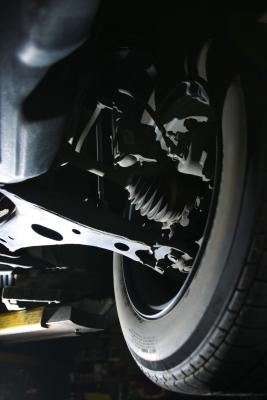
There is a minor difference between a shock absorber and a strut. Shocks are exposed in the suspension system, while a strut is mounted inside of a suspension coil spring. Other than that distinction, they both serve the same purpose: to serve as a dampener for a vehicle's suspension springs. Without shocks or struts, the tires, wheels and the vehicle itself would bounce excessively. Likewise, worn-out or defective shocks and struts will cause a vehicle's tires and wheels to bounce too much, creating an unsafe and uncomfortable driving experience.
Inspect the shocks by looking for oil leaks. Use a flashlight and visually inspect the shocks from top to bottom. If oil is detected, clean the oil from shocks. Then drive the vehicle and recheck for fresh oil leaks.
Perform a bounce test by pushing down on the front and then the rear of the vehicle. After pushing down, back away from the vehicle and see of the vehicle bounces. A vehicle that bounces up and down more than once or twice is an indication of worn-out shocks or struts.
Run the palm side of your gloved hand over the tread of the tires. Feel for choppy or bumpy tire tread wear. Choppy tread wear is a sign of defective shocks.
Replace any shock or strut that's leaking, bounces excessively or causes choppy tire tread wear.